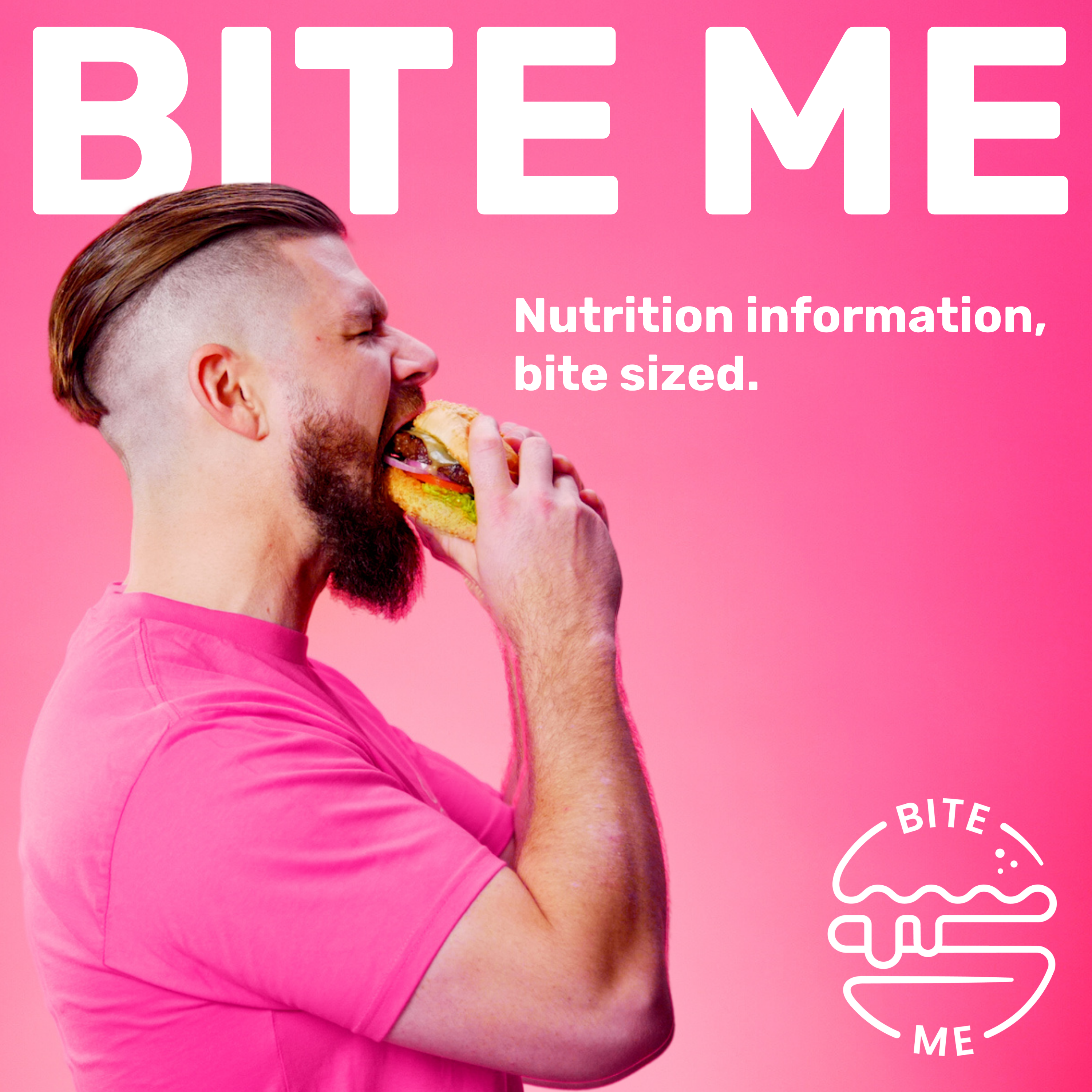Beans, beans, they're good for your heart...
Beans and legumes are some of the cheapest, healthiest foods we have available to us, so it makes sense to try and include them more often in our diet
This can unfortunately come with a few unwanted painful or smelly side effects…
But I’ve got two hacks you can use to reduce the chances of that happening, so you can start including these nutritional powerhouses more often!
Transcript
Welcome back to the Bite Me Nutrition podcast.
Today I'm going to try and get
you to eat more beans and lentils.
They're so good for you.
They're cheap, they're shelf stable,
so minimal food waste.
They're an okay source of protein, they're pretty
good, but they're a fantastic source of fiber
and lots of other healthy plant compounds.
And so it's something that we could
all benefit from consuming more of. Now.
Now, I know there are some issues with these sorts of
foods that people struggle with, so I'm going to go through
two quick hacks that can help you increase the lentils and
the beans and things in your diet without some of the
unwanted side effects that we might come across. Right.
They just fit in with other foods so easily.
Pardon me?
Sprinkling over salads, mixing them through like any kind
of all in together dishes, the classic lentils in
your spaghetti bolognese, or through soups or stews or
curries or all of those sorts of things.
They're such an easy food to hide in other foods.
Or if you've had the edge or
snack time, little tins just to eat
directly from the tin because they're delicious.
Except for the lime one.
That one's gross, but the rest of them also fantastic.
However, as we know, beans, beans,
they're good for your heart.
The more you eat, the more you fart.
That's directly from the textbook.
And so the reason why this happens is because of
something called fodmaps, which you might be familiar with.
Fodmaps stands for fermentable oligo di mono.
I knew I was going to stuff that up.
Fermentable oligo mono and disaccharides and polyols.
Fodmaps.
I get that right? Yes. Great.
That's what fodmaps stand for.
Basically what they are is little fibers, little
chains of carbohydrates in foods that some of
us don't digest and break down very well.
Everyone kind of has different levels of
their ability to break down these fodmaps.
For some people, I'm sure you've got that friend that can
eat a whole tin of baked beans and be fine.
I'm fortunate that's me.
But then other people are
going to have different results.
So this is specifically due to two types
of fodmaps, galacto oligosaccharides, otherwise known as gos,
and sometimes also fructans, beans and lentils.
And that family of foods is very
high in those fodmaps, particularly the goss.
And like I said, these are things
that we can struggle to digest.
And so what that means is these little
fibers get all the way through from our
mouth, through our stomach, through our small intestine,
and all the way to our large intestine.
And it's there where the trouble can begin,
because our large intestine is where the large
majority of our gut bacteria live.
And the gut bacteria love fodmaps, right?
Because it's one of their foods and they
kind of get a little bit overexcited.
And they can over ferment those foods because
fermentation is kind of the process by which
they break down these fibers and things.
And so a byproduct of that fermentation is excess gas.
And that can cause bloating.
It can cause water retention.
It can cause all of those uncomfortable symptoms
that you might have experienced after eating beans
and lentils and things of that nature.
So that's what's happening.
But like I said, there's two things we
can do to help reduce the likelihood of
that happening and allow you to eat more
of this incredibly nutritious and cost effective food.
Two of my favorite words, let's
assume cost effective is one word.
So the first thing is starting with small portions.
That's really, really critical. All right.
The fibers in these foods, they're kind of hard work
for our body and our gut to digest, right?
Similar to going to the gym, the more of
these foods that you eat over time, the better
your body does get at digesting and absorbing them.
Same way if you continue to go to the gym, you
get stronger and you get better at adjusting to those weights.
Now, similarly, the first time you go to the
gym, it's probably going to be, you're going to
hurt for a few days a week afterwards, right?
Even if you are sensible, but especially if you're not
sensible and you go to the gym, and in your
first gym session, you're there for an hour and you
pick up every weight and you absolutely destroy yourself.
You're probably not going to be able to
walk for the next three weeks, right?
And that's definitely what can happen
with beans and lentils and things.
People go, I should eat some of these.
And they eat like half a can.
And so it's really important to
start with a small dose.
I've had clients start with like a tablespoon,
half a tablespoon, just sprinkling a couple of
beans over a salad or a few lentils
throughout their spaghetti, those sorts of things.
And you can just gradually increase that dose
over time as your gut becomes better and
stronger at breaking down these foods.
Now, everyone's tolerance for these foods is going to
be different, even if you follow these hacks, right?
So someone might tap out at a quarter of a
cup or two tablespoons, or someone might be able to,
like I said, end up eating the whole can.
But either way, you're still including these
foods in, which is pretty awesome.
The next really interesting, I think hack
is using canned varieties of these foods.
So canned lentils, canned beans, those sorts of things,
because canned lentils and beans have a much lower
FoDMap content compared to their dried counterparts.
And this is because fodmaps are water soluble.
And so because your beans and lentils are sitting in
the can for a long time, they're sitting in water.
The fodmaps in those foods kind of dissolve and
leach out into the liquid in the can.
And so when you drain that can, you're draining
off a lot of the extra foDMap content, so
you don't have to digest and absorb those.
You can take that an extra step further and make
sure that you rinse those canned lentils and beans, because
that can further reduce the FODMap content, making them, once
again, even easier for you to digest.
So I've had so many clients who haven't been
able to eat these foods, and by following those
two steps, starting small, starting with smaller portions, and
gradually building them over time, and doing that with
canned and rinsed varieties of these foods, they've been
able to include way more than they ever thought
they were going to be able to do.
So if these are foods you have avoided
for the aforementioned windy reasons or pain, I
don't want to make light of gut symptoms.
Obviously, they can really suck.
But if that's something you've been struggling with and
avoiding these foods, give those two hacks a try, and I think you'll be in luck.
All right, I'll chat to you next time. Bye.


